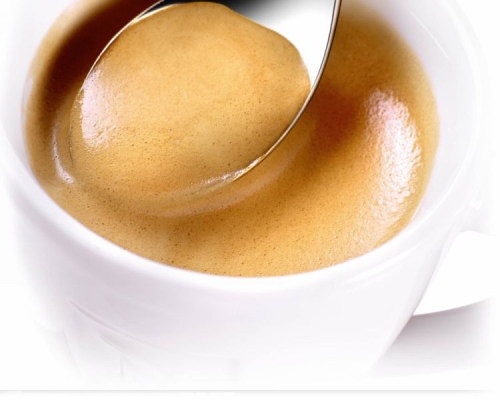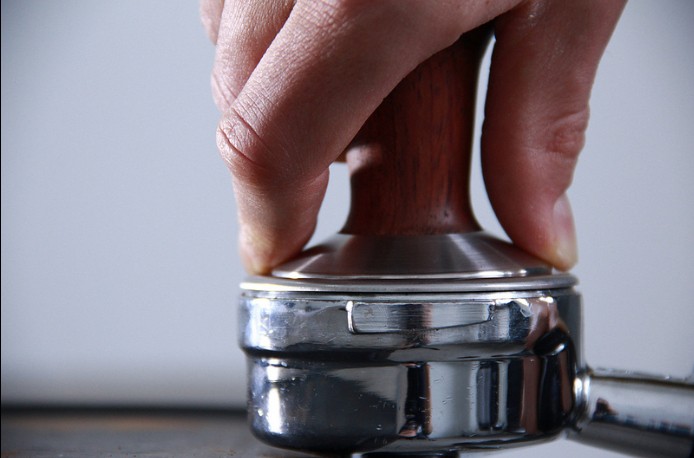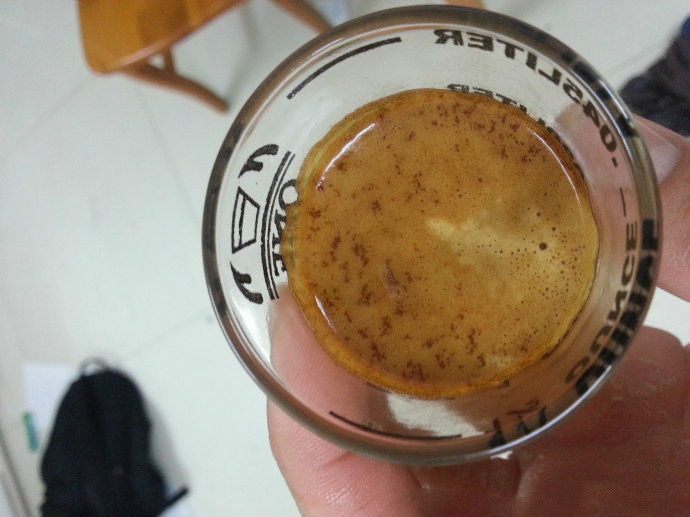Espresso understand how espresso and controlling crema make espresso crema better
Knowing more about crema can enhance the ability of baristas to make coffee, and it can also help improve the method of making espresso, so that guests who come to cafes to consume can fully experience the charm of a perfect cup of coffee. Today, we follow the Chongqing Barista barista barista training teachers into the espresso crema, in-depth understanding and control of espresso crema, and improve the ability to make coffee.
How to make espresso crema more?
One refutation for not using Robusta in condensed combinations is that "Robusta can bring better crema to concentration." This is true, because Robusta contains less oil than Arabica. On average, Robusta contains only half as much flavor and aromatic oil as Arabica, which means less oil can be extracted, and they are less destructive to bubbles. Adding Luodou will correspondingly reduce the total amount of oil that can be extracted, and the result is obvious, and you will get more crema.
Food technologists will tell you that a low oil content will make the concentrated body feel thicker at first, but the low oil content means that the concentrated taste containing Luoda is not as durable as that of pure Arabica and less full. So if this argument is to work, you need to control the use of Luodou at 5% to 10%, so that you can increase the amount of crema without losing too much quality. Some articles focus on the effects of Robusta's special sugars on crema, and it is hoped that the research results in this area will be disclosed and updated.
All of this does not solve all the questions about crema. When making coffee, you will encounter some unusual concentrations, which produce a very unique crema because of its special chemical composition. With regard to this situation, it is obvious that the coffee grown ecologically in the southern state of Minas, Brazil, and the Camocim estate uses Drypulp (that is, the coffee fruit retains more pulp to dry) to deal with this yellow bourbon. When tested in a cup, this bean has a very strange sweet taste, and when used to make espresso-even if it has been grown for nine days, it still produces extremely rich and thick crema.
After placing the concentrate for a long time, there will still be crema with a texture similar to that of dried milk foam. This is not the only coffee that produces "special" crema. Coffee that is usually treated in a special way, such as Malabar monsoon beans, produces a very special texture of crema, but the crema tastes dry and bitter.
To sum up, even within Arabica, there are many differences in crema among different varieties, mainly due to the form of carbon dioxide stored in different coffees, the content of oils and lipids in different coffees, and how these oils and lipids are extracted. The controversy about crema between Arabica and Robusta is actually very limited. In the case of Arabica coffee alone, the discussion of crema can even be extended to micro-genera.
Knowing more about crema can enhance the ability of baristas to make coffee, and it can also help improve the method of making espresso, so that guests who come to cafes to consume can fully experience the charm of a perfect cup of coffee. Today, we follow the Chongqing Barista barista barista training teachers into the espresso crema, in-depth understanding and control of espresso crema, and improve the ability to make coffee.
How to make espresso crema more?
One refutation for not using Robusta in condensed combinations is that "Robusta can bring better crema to concentration." This is true, because Robusta contains less oil than Arabica. On average, Robusta contains only half as much flavor and aromatic oil as Arabica, which means less oil can be extracted, and they are less destructive to bubbles. Adding Luodou will correspondingly reduce the total amount of oil that can be extracted, and the result is obvious, and you will get more crema.
Food technologists will tell you that a low oil content will make the concentrated body feel thicker at first, but the low oil content means that the concentrated taste containing Luoda is not as durable as that of pure Arabica and less full. So if this argument is to work, you need to control the use of Luodou at 5% to 10%, so that you can increase the amount of crema without losing too much quality. Some articles focus on the effects of Robusta's special sugars on crema, and it is hoped that the research results in this area will be disclosed and updated.
All of this does not solve all the questions about crema. When making coffee, you will encounter some unusual concentrations, which produce a very unique crema because of its special chemical composition. With regard to this situation, it is obvious that the coffee grown ecologically in the southern state of Minas, Brazil, and the Camocim estate uses Drypulp (that is, the coffee fruit retains more pulp to dry) to deal with this yellow bourbon. When tested in a cup, this bean has a very strange sweet taste, and when used to make espresso-even if it has been grown for nine days, it still produces extremely rich and thick crema.
After placing the concentrate for a long time, there will still be crema with a texture similar to that of dried milk foam. This is not the only coffee that produces "special" crema. Coffee that is usually treated in a special way, such as Malabar monsoon beans, produces a very special texture of crema, but the crema tastes dry and bitter.
To sum up, even within Arabica, there are many differences in crema among different varieties, mainly due to the form of carbon dioxide stored in different coffees, the content of oils and lipids in different coffees, and how these oils and lipids are extracted. The controversy about crema between Arabica and Robusta is actually very limited. In the case of Arabica coffee alone, the discussion of crema can even be extended to micro-genera.

Important Notice :
前街咖啡 FrontStreet Coffee has moved to new addredd:
FrontStreet Coffee Address: 315,Donghua East Road,GuangZhou
Tel:020 38364473
- Prev

China Coffee Network teaches you coffee bean extraction area and extraction time what water can extract and when to boil.
There are many factors that affect coffee extraction. Baristas need to control these factors reasonably before they can get the perfect coffee and produce the taste they want. today, the barista barista training teacher in Chongqing will tell you about controlling the time and area of coffee extraction to meet the extraction requirements. Extraction time and extraction area are at any time
- Next

Judging by coffee taste, coffee extraction and coffee quality typical flavor characteristics of coffee with over-extraction
Extraction may be the most important aspect of coffee brewing, but it is also one of the least understood by baristas. Extraction is everything. Without extraction, you can't even taste a cup of coffee. Coffee extraction is the simplest but not 100% accurate definition: coffee extraction is the process by which water dissolves the substance in coffee powder. It seems very easy to sum up, but really understand
Related
- What documents do you need to go through to open a coffee shop? coffee shop coffee shop certificate processing process
- How to purchase Coffee beans in small Cafe how to choose a suitable supplier for domestic Coffee supply Company
- How to drink Starbucks Fragrance White Coffee? how to make Australian White Coffee? what Italian coffee beans are recommended?
- The Story of Flora Coffee: the name of Flora Coffee Bean and the implication of the Flowers on Florna Coffee
- How much does a cup of coffee cost? How much is the profit of a cup of coffee? What is the profit of the coffee shop in a year?
- Yunnan small Coffee, known as "fragrant Coffee", introduces the characteristics of Alpine Arabica Coffee producing areas in Yunnan, China
- 2023 latest Starbucks full menu price list how much is a cup of Starbucks coffee what is better to drink the most popular hot and cold drinks recommended
- Starbucks different kinds of Coffee Price list Starbucks menu 2023 Top Ten Best drinks in Starbucks
- Starbucks Spring praise Comprehensive matching Coffee Bean theme Story Packaging implication and taste description
- The cost of a cup of coffee latte American coffee cost price and selling price

